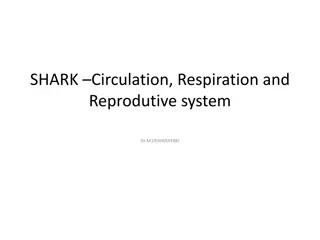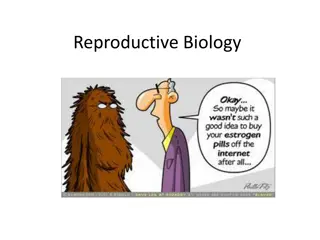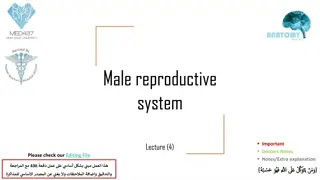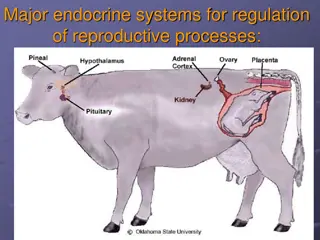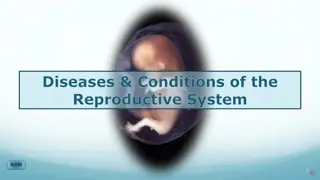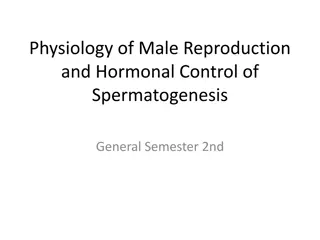
Understanding Male Reproductive System Anatomy and Function
Explore the male reproductive system, including organs like testes, epididymis, vas deferens, and their functions in producing sperm and semen. Learn about the importance of caring for this system, conducting self-examinations, and identifying potential diseases.
Download Presentation

Please find below an Image/Link to download the presentation.
The content on the website is provided AS IS for your information and personal use only. It may not be sold, licensed, or shared on other websites without obtaining consent from the author. If you encounter any issues during the download, it is possible that the publisher has removed the file from their server.
You are allowed to download the files provided on this website for personal or commercial use, subject to the condition that they are used lawfully. All files are the property of their respective owners.
The content on the website is provided AS IS for your information and personal use only. It may not be sold, licensed, or shared on other websites without obtaining consent from the author.
E N D
Presentation Transcript
Male Reproductive System Live Well: Reproductive and Sexual Health Click on the link to view the video associated with this lesson: https://bcove.video/3JQnZ1x
Write About It Name five male reproductive organs and briefly describe the function of each.
Can You . . . explain the function of the male reproductive system? assess the purpose of the male reproductive system? explain how to care for the male reproductive system? discuss the importance of a monthly testicular self-examination? differentiate between the different diseases and disorders of the male reproductive system?
Male Reproductive Anatomy (1 of 2) Testes or testicles are responsible for making testosterone, the primary male sex hormone, and for making sperm. The scrotum hangs behind the penis and protects the testes. Sperm production begins at puberty and continues throughout life. For sperm to develop properly, the testes must be at a temperature slightly cooler than the body temperature. Each day several million sperm are produced in the seminiferous tubules inside the testes. Spermatogenesis is the production and maturation of sperm, which takes approximately 68 days. (continued)
Male Reproductive Anatomy (2 of 2) The epididymis is responsible for carrying and storing sperm created in the testes. Sperm mature in the epididymis and during sexual arousal move into the vas deferens. The vas deferens tube transports mature sperm to the urethra. The urethra carries urine from the bladder to the penis and is the tube that ejaculates semen, the fluid that carries the sperm, from the penis. The penis is the male organ for sexual intercourse.
Semen Semen is the fluid that protects and transports the sperm. Fluid from the seminal vesicles provides a source of energy and mobility for sperm. The prostate gland contributes additional fluid, which also helps to nourish the sperm. The bulbourethral glands or Cowper s glands produce a clear, slippery fluid that lubricates the urethra and neutralizes any acidity present due to any remaining drops of urine left in the urethra.
Purpose of the Male Reproductive System The purpose is to produce, maintain, transport, and discharge sperm and semen and to produce and secrete testosterone.
Diseases and Disorders of the Male Reproductive System (1 of 2) Erectile dysfunction is the inability to get and keep an erection firm enough for sexual intercourse. Peyronie s disease is a result of scar tissue developing on the penis, causing curved, painful erections. Prostate cancer is one of the most common types of cancer. (continued)
Diseases and Disorders of the Male Reproductive System (2 of 2) Testicular torsion happens when a testicle rotates, which twists the spermatic cord that brings blood to the scrotum. Male infertility can be caused by low sperm production, abnormal sperm function, or blockages that prevent the delivery of sperm. Testicular cancer is the most common cancer in males between the ages of 15 and 35.
Caring for the Male Reproductive System Testicular self-exams should be done monthly to check for lumps, swelling, or soreness as well as a continuing dull ache in the groin without cause. Shower daily to keep the external reproductive organs clean, making sure to wash around the head of the penis. When playing sports, a protective athletic cup should always be worn to protect the scrotum and testes from injury.
Testicular Self- Examination Steps 1. Perform the testicular self-examination in the shower. 2. Check one testicle at a time. 3. Gently roll the testicle between the thumb and fingers feeling for lumps, bumps, changes in size, shape, consistency, or painful areas. 4. Make sure to check both the front and back of each testicle. 5. Tell a doctor if there are any changes to a testicle.
Skill-Building Challenge Choose a disease or disorder found in this lesson and find at least two valid and reliable resources by answering the questions on the worksheet. Using the reliable resources you find, create a public service announcement, social media post, or flyer explaining the disease or disorder, how it is contracted or if it is genetic, signs and symptoms, and how it can be cured or controlled. Share your creation with the school or on social media, if possible.








